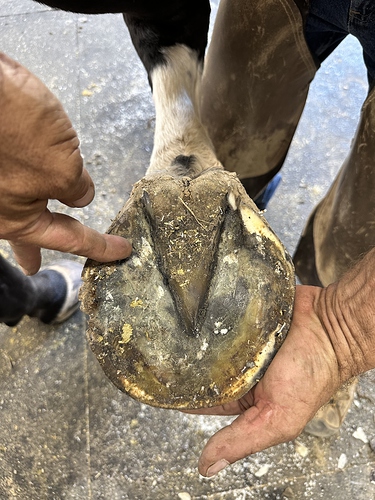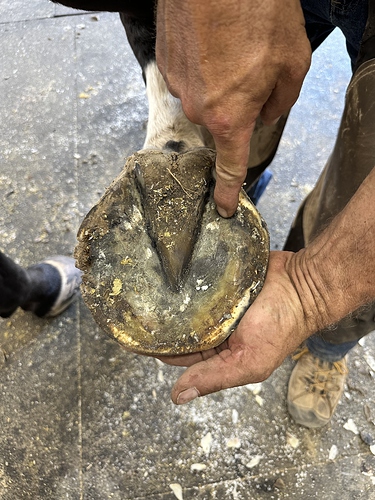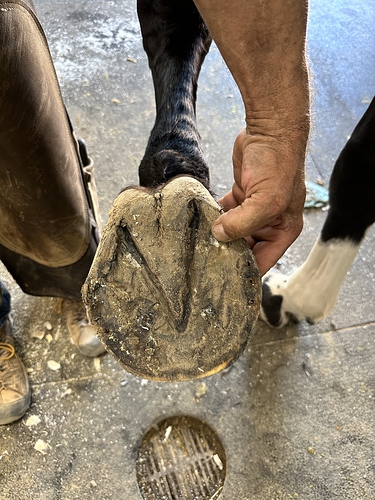I have a wonderful 9 year old 1.30m/1.40m jumper, he just had 3 weeks of showing a month ago.
We got home from the show, and he got his normal 5 days off and went back to work feeling great for 2 weeks. Since he wasn’t jumping, we let his feet grow out onto a 5 week cycle (he normally is done every 28-30 days religiously) and he came up a little wonky on the LF but worked right out of it within 60 seconds. Had the farrier come out same day and do his feet, jogged him for the farrier and he looked amazing again. Went back to work for 3 days, popped some cavaletti, felt great and came out the next day dead lame on the LF for his ride. Farrier was out later that afternoon, and jogged him - super sound and amazing 10 hours after being dead lame. Vet came out the next day, jogged great on soft and hard ground, looked good on flexions, decided it had been 14 months since his coffins were injected so went ahead with some coffin injections and did X-rays to check hoof balance (x rays came back clean).
Did the 5 days of stall rest/hand walks post coffin injections, came out sound for 3 days of walk/trot, on the 4th day he was a little wonky for the first few steps but then was fine and continued trotting for 5 minutes to see if it got better or worse and he stayed sound. The next day (yesterday), comes out and is dead lame on the LF again.
This big guy is 17.3hh/18hh and is a diva. Any little thing upsets him and makes him ouchy, he’s not stoic at all. His front feet have a history of being hard to manage … he wears custom size steel baby heart bars, is incredibly sensitive to moisture (has a history of abscesses, zombie foot infections, dermatitis on the leg that makes him lame) and has impression material with copper sulphates under a wedge pad year-round. He gets balance X-rays every 6 months atleast to make sure the angles are good.
I’m a bit baffled by the on and off intermittent lameness and the severity. One day he’s great, 10 hours later he is abcess lame, the next morning he’s fine again. Any ideas?? I have the farrier coming out today, and have already put in another call to his vet.



